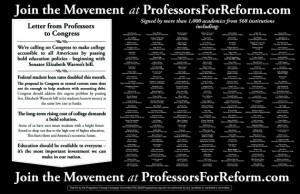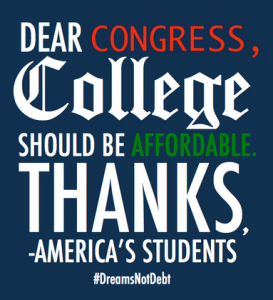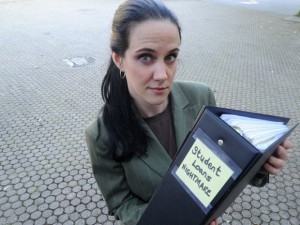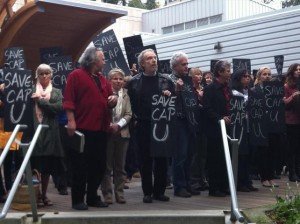I thought I only had to come out once! In 1996, at 22 years of age, I came out of the closet – the most liberating thing I’ve ever done. Now, I’m coming out again: My name is Robert Applebaum and I have $88,000 worth of student debt!
We’ve recently partnered with over a dozen organizations to launch what we’re calling the #OutWithStudentDebt video project. The goal of this project is to collect as many of your 1-2 minute videos that will be featured on our websites, with the goal of shedding the stigma of shame and embarrassment that comes along with being buried under mounds of student loan debt.
Please click on the graphic above to view StudentDebtCrisis.org’s Artistic Director, Aaron Calafato’s sample/instructional video and then learn how to go about submitting your own #OutWithStudentDebt video!
Over the course of the next 3 weeks, we will be collecting these #OutWithStudentDebt stories and featuring them on our website, after which, we’ll be asking the general public to vote for their favorites.
Please be sure to follow the instructions for uploading your video so that it can be properly entered into the #OutWithStudentDebt Video Project.
Be honest. Be concise. Be brave! You are NOT alone! You are in the company of nearly 40 million Americans who are similarly struggling under the weight of their own student loans. Please join us by creating your own video and telling your personal story. Let’s put human faces on the ever-growing crisis of over $1.2 Trillion in outstanding student loan debt.
You can also help out by spreading the word – simply click here to tweet about the #OutWithStudentDebt Project, or click here to post it to Facebook.
Thank you, as always, for your continued support. Now, let’s all come #OutWithStudentDebt!
Sincerely,
Rob, Natalia, Kyle, Aaron & The StudentDebtCrisis Team.
Follow us on Twitter
Join us on Facebook
P.S. We’d like to give a special thanks to Contest.is for providing the platform for the #OutWithStudentDebt Video Project!


 Follow
Follow





